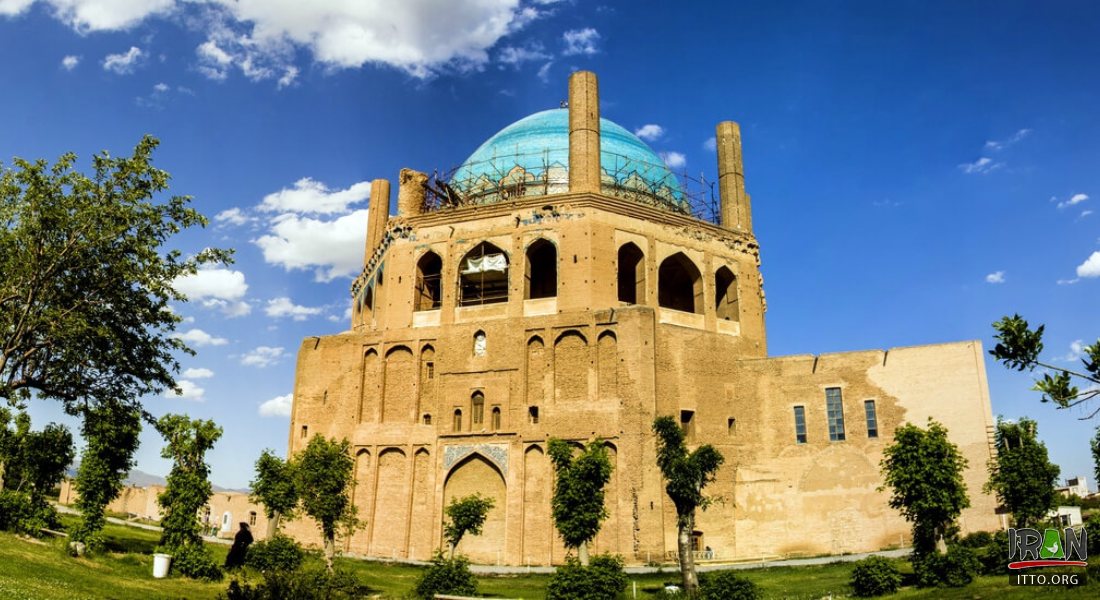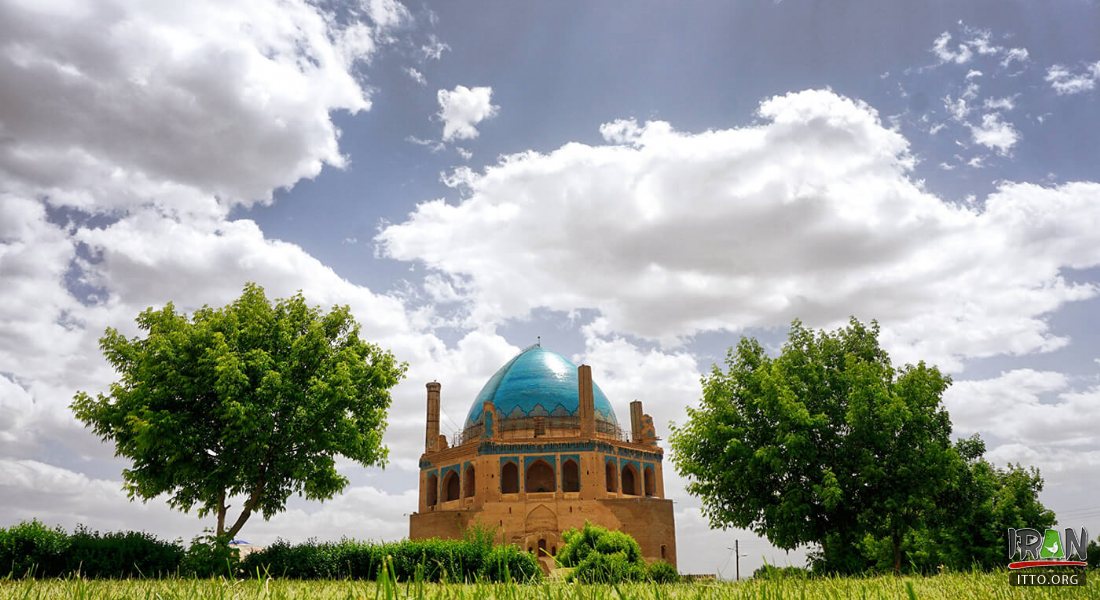Dome of Soltaniyeh (Gonbad-e Soltanieh) lies south west of the Cohan Dej (Royal citadel). It was constructed during the reign of Soltan Mohammad Khoda Bandeh (
Muhammad Khodabandeh, Öljaitü, Oljaito) in the years 704-712 AH.
This structure has 8 elevated porticos and about 50 chambers, including an area which is also similar to a chamber. The dome of this construction weighs 200 tons and is situated on pillars, bearing an area of 50 sq.m. each if separated or cut across. This structure is made of a mixture of gypsum and to a lesser proportion limestone.

Soltaniyeh historical dome, the largest brick dome in the world, was built commissioned by Sultan Mohammad Khodabandeh (Oljeitu) in Soltaniyeh city, the capital of Ilkhanid dynasty from 1302 to 1312.
Gonbad Soltanieh is erected in three floors which are defined as follows. The ground floor consists of the eight portions. The first floor comprises of the halls which run throughout this floor. On the third floor is the foundation column of the dome and the octagonal pillars supporting the minarets. The entrance to the cellar is from the southern portico. The layout or plan of this cellar is a complex one, consisting of 7 segregated sections, each part independent of the other.
The principle factors regarding the artistic effects revealed in Gonbad Soltanieh are the inlayed brick-work, plaster moldings, engravings and tile works. All these together create harmony that is worth appreciation and artistic value. For example, the spectacular engraving here that stands 360 cm. high in which a verse from the Holy Qoran (Sureh Fath) has been inscribed in the beautiful script of 'tholth'. On the upper or second floor of this structure engravings can also be observed, one of these inscribed with the (Ayeh 125 Sureh Mobarakeh Baqareh) from the Holy Qoran inscribed in the "Kufic' script.

There were three main sections in this mausoleum: The domed chamber, cellar, and Torbat Khaneh. Most of the decoration has been applied to the inner part of the structure of the domed chamber.
Different parts of this monument are as follows:
Torbat KhanehThis part is placed on the southern side with a length of 17 meters, a width of 8 meters, and a height of 16 meters. Torbat means an amount of soil which belongs to a holy shrine. Öljaitü has also used the soil of Najaf to the construction of this part. This part is known as Torbat Khaneh because the wall of Mihrab written in Kufic and Thuluth script using the soil of Husayn ibn Ali shrine.
SardabehThis part is placed on the southern side, under the Torbat Khaneh. Sardabe is the place where Öljaitü was buried. The entrance of this part has a low height to respect the dead person.
Gonbad KhanehThis part is the place of the dome which contains a two-shelled dome with a height of 50 meters. This two-shelled dome makes it resistant to the earthquake. This dome has some lightwells which were as the clock during that era.




